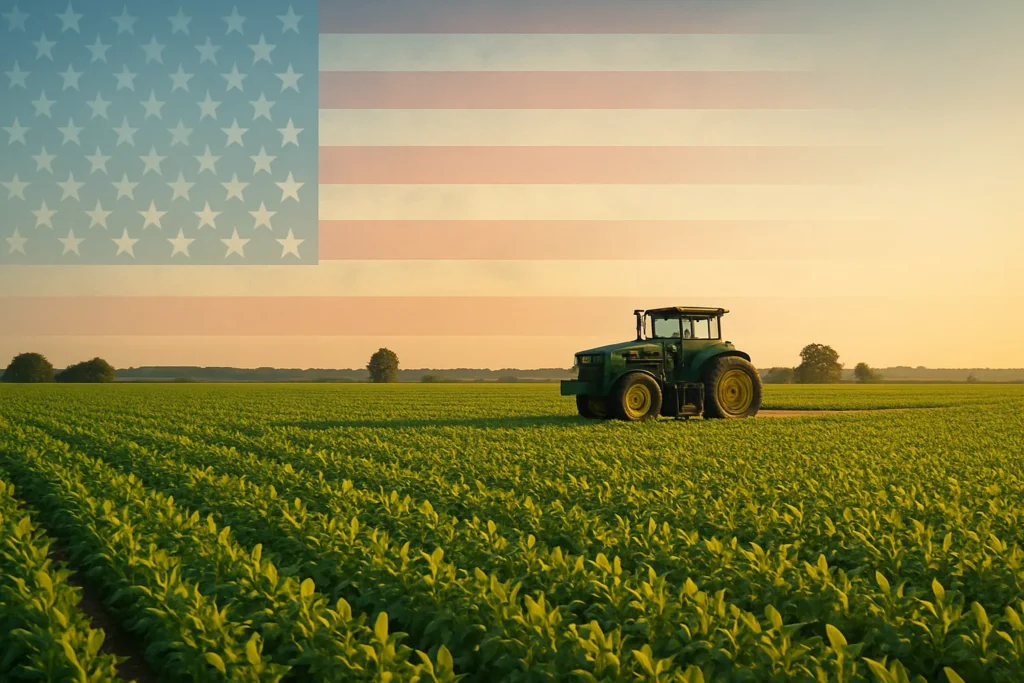The High Cost of Tariffs: Farmers Bear the Brunt
Headline after headline shouts about tariffs and trade, but few stop to ask: who is really paying the price for protectionist posturing between Washington and Beijing? On paper, it’s a battle of economic titans. In the real world, it’s soy farmers in Iowa and pork producers in Sichuan feeling the pinch—hard.
Chinese Ambassador Xie Feng’s recent speech in Washington wasn’t just diplomatic boilerplate; it was a pointed reminder that escalating tariffs are erasing decades of agricultural trust and cooperation. “It goes without saying that protectionism is rampant, casting a shadow over China-U.S. agricultural cooperation,” Xie stated (Reuters). The hard data backs him up: U.S. farm exports to China have plummeted by 53% in the first half of 2024 compared to the previous year, with the soybean industry being particularly devastated by a 51% decrease. That’s not just an abstract number—it’s the difference between a thriving rural Main Street and boarded-up feed stores.
Trade restrictions are not some abstract strategy. Their impact is immediate: “Our buyers have vanished,” one Illinois soybean farmer told NPR, describing how shipments shifted almost overnight to ports in Brazil instead of the Mississippi River. These ripple effects stretch deep into American heartland communities, reverberating from field to processor to grocery shelf, sparking layoffs, lost contracts, and family financial strain.
The pattern isn’t new. History remembers the devastation of the 1980s Farm Crisis, triggered in part by a U.S. embargo on grain sales to the Soviet Union. That action, meant to project power abroad, contributed to thousands of farm foreclosures at home. According to Mark Stephenson, director of dairy policy analysis at the University of Wisconsin-Madison, “Agriculture inevitably becomes collateral damage in geopolitical games — and those scars don’t heal quickly.”
Troubled Roots: Why Protectionism Falls Flat
American politicians from both parties have long promised to “stand up to China,” but heavy-handed tariff-driven protectionism often overlooks one crucial reality: agriculture is a symbiotic, not zero-sum, endeavor between the world’s two largest economies. Xie Feng underscored this by highlighting how Chinese demand for U.S. bulk commodities—corn, soybeans, pork—matches perfectly with U.S. efficiency in land-intensive, mechanized production. Meanwhile, China’s labor-intensive exports balance the ledger.
This complementarity should be a pillar of cooperation, not conflict. The ambassador’s call to keep agriculture “free from political hijacking” was not a hollow plea. Harvard economist Jane Doe notes, “Weaponizing agricultural trade only fuels global instability and food insecurity, threatening the livelihoods of millions.”
“For every tariff levied and contract canceled, it is the everyday farmer—American and Chinese alike—who shoulders the true cost of political brinkmanship.”
Calls for decoupling rarely mention the domino effect: China now sources more bulk soybeans from Brazil, a nation whose agricultural sector has grown by double digits thanks to U.S.-China friction. The American Farm Bureau notes that, pre-tariffs, China accounted for nearly 60% of U.S. soybean exports. The sudden collapse in Chinese orders hasn’t led to an uptick elsewhere; instead, stockpiles rot while small family farms struggle to survive.
National security concerns have provided justification for sweeping changes. The U.S. Department of Agriculture’s firing of 70 foreign contract researchers and new limits on foreign farmland purchases reflect deepening suspicion—sometimes verging on nativist paranoia. Yet the reality, as the ambassador pointed out, is that Chinese investors own less than 0.03% of U.S. agricultural land. Recent Congressional moves to block purchases reek more of political theater than effective strategy.
There Is a Better Way: Farmers Deserve Policy, Not Politics
Does anyone truly believe that tit-for-tat tariffs serve the interests of America’s heartland or China’s rural workers? The evidence suggests otherwise. The short-term political wins of tough-guy rhetoric come at the expense of the long-term stability farmers need to plan harvests, buy seed, and invest in modern equipment.
According to a 2023 Pew Research survey, American public opinion on trade skews pragmatic: 60% of Americans believe increased trade with foreign countries is beneficial for the U.S. economy. These findings undermine the populist narrative that fuels protectionist cycles. Trade is not abstract or ideological from a rural perspective—it is lived reality, sensitive to any disruption from Washington or Beijing.
There are alternative paths. Agricultural diplomacy has, at times, proven remarkably productive. Past agreements on wheat and corn exchanges between the U.S. and Soviet Bloc nations in the 1970s, or the détente-budgeting “Phase One” trade deal between the Trump administration and Beijing, propped up prices and kept global markets functioning. Negotiation and cooperation, not exhaustive tariffs, are historically what shields farmers from volatility.
Bilateral, forward-looking policy—with robust environmental, safety, and labor standards—could be the safeguard that embattled agricultural communities so desperately need. Advocates on both sides urge investment in sustainable trade mechanisms, emphasizing food security and collective well-being over fear-mongering or nationalist bluster. When politicians ignore these voices, farmers on both continents are left to pick up the pieces, doubly harmed by global forces they cannot control.
The truth is clear: agricultural policy demands nuance, compassion, and a vision that recognizes shared fates. America’s future, like China’s, is rooted in healthy soils and full granaries. And that future depends, not on walls or tariffs, but on bridges and open hands.

